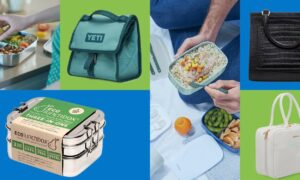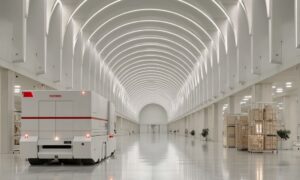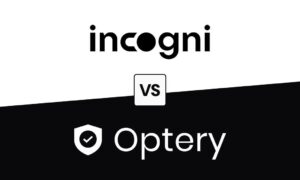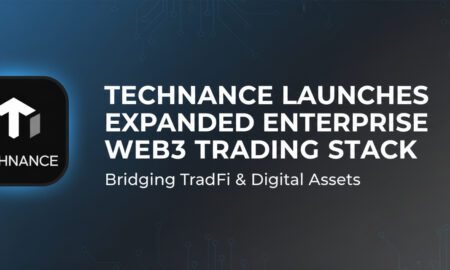Lunch bags have come a long way from simple paper sacks and basic insulated totes. As technology continues to revolutionize various aspects of our lives, even lunch bags are getting a high-tech makeover. With the rise of smart technology, eco-friendly materials, and innovative designs, the lunch bag of the future will do much more than just carry food. It will help maintain food quality, track nutritional intake, and even integrate seamlessly with other smart devices. The evolution of lunch bags is a perfect example of how everyday items can become smarter, more sustainable, and increasingly convenient. As we look ahead, let’s explore how lunch bags are transforming and what the future holds for this essential item.
Smart Temperature Control and Food Safety
One of the most exciting advancements in lunch bags is the integration of smart temperature control. Traditional insulated lunch bags can keep food warm or cold for a limited time, but smart lunch bags are taking this a step further by incorporating active heating and cooling technology. Future lunch bags may feature built-in thermoelectric cooling systems, allowing users to set and maintain precise temperatures for their food. Some high-tech models already exist with rechargeable battery packs and cooling elements that can keep food fresh for an entire day.
Beyond temperature control, smart lunch bags may also include food safety sensors. These sensors could monitor the freshness of food, detect bacteria growth, and alert users if their meal is no longer safe to eat. With real-time notifications sent to a smartphone app, users would have an extra layer of security, ensuring they consume food at its peak freshness. This advancement is especially useful for people who carry perishable items such as dairy products, salads, or seafood, as they require stricter temperature management.
Integration with Smart Devices and Apps
As smart technology becomes increasingly prevalent, lunch bags will likely integrate with smartphones, fitness trackers, and other smart devices. Imagine a lunch bag that syncs with your health app, tracking the nutritional content of your meals and helping you maintain dietary goals. This level of connectivity could be beneficial for people managing diabetes, weight loss, or other health conditions requiring meal monitoring. Smart lunch bags could scan barcodes or even recognize food items using AI-driven cameras, logging meal details in real-time.
Additionally, app-connected lunch bags could remind users when to pack their lunch, suggest meal prep ideas based on dietary preferences, and even provide insights into their eating habits. A well-designed app could also feature meal-planning capabilities, allowing users to schedule their lunches for the week while ensuring they meet their nutritional needs.
Self-Cleaning and Odor Control Features
Cleaning lunch bags can be a hassle, but future designs might incorporate self-cleaning technology. Just as self-cleaning water bottles use UV-C light to eliminate bacteria, future lunch bags could have built-in UV sanitation systems. After each use, the bag could disinfect itself, removing food particles, germs, and odors without requiring manual washing. This innovation would be a game-changer for individuals who frequently use their lunch bags and want a hassle-free way to maintain hygiene.
Odor control is another crucial factor in lunch bag evolution. Advanced materials with antibacterial properties and odor-neutralizing capabilities could become standard. Some high-tech lunch bags may also include activated carbon filters to absorb unwanted smells, ensuring that even after packing strong-smelling foods like fish or garlic-heavy dishes, the bag remains fresh and pleasant.
Sustainable and Eco-Friendly Materials
As environmental concerns continue to grow, the demand for sustainable products is rising. The future of lunch bags will see a significant shift towards eco-friendly materials that minimize environmental impact. Manufacturers are already exploring biodegradable fabrics, recycled plastics, and plant-based insulation materials to create sustainable lunch bag options.
In addition to using green materials, some futuristic lunch bags may incorporate solar panels to power smart features, reducing the reliance on disposable batteries. Others might be designed to be fully compostable, breaking down naturally after years of use without leaving harmful waste behind. By integrating sustainability into lunch bag design, manufacturers can contribute to the global movement towards reducing plastic waste and promoting greener consumer choices.
Expandable and Modular Designs
Lunch bags of the future will not only be smarter but also more adaptable to users’ needs. Expandable and modular designs will allow people to adjust the size of their lunch bag based on the day’s meal requirements. For example, a compact bag could be expanded to fit larger meals or collapsible sections could provide extra space for snacks or beverages.
Some modular lunch bags might include detachable compartments that can be used separately or together. This feature could be particularly beneficial for meal preppers who want to keep different food items organized or for people who like to carry separate meals for different parts of the day. Additionally, modular compartments could be designed to snap onto smart food containers, further enhancing convenience and organization.
AI-Powered Meal Recommendations
Artificial Intelligence (AI) is making its way into various aspects of our daily lives, and lunch bags may soon benefit from AI-driven meal recommendations. Future lunch bags could analyze user preferences, past meal choices, and dietary restrictions to suggest meal options tailored to individual needs. These recommendations could be displayed on a built-in screen or sent via an app.
Imagine a lunch bag that helps you create balanced meals by suggesting protein, carbohydrate, and vegetable combinations based on your fitness goals. AI-powered meal planning could be especially helpful for busy professionals, students, and parents looking to pack healthy lunches efficiently. Combined with integration into grocery delivery services, this feature could even suggest items to add to a shopping list, streamlining the meal-prep process.
The Future Is Here: What to Expect Next
While many of these innovations are still in development, the future of lunch bags is undoubtedly exciting. We can expect to see more brands adopting smart technology, eco-friendly materials, and customizable designs in the coming years. The convenience of smart lunch bags will appeal to professionals who need efficient meal storage, students who want tech-savvy solutions, and outdoor enthusiasts who require reliable food preservation.
With the rise of health-conscious lifestyles and increasing environmental awareness, the demand for innovative lunch bags will only continue to grow. Whether through AI-powered meal tracking, temperature regulation, or self-cleaning capabilities, these advancements will transform the way people pack and consume their meals. Investing in a smart, high-tech lunch bag may soon become as common as owning a smartwatch or fitness tracker.
Conclusion
Lunch bags are no longer just simple carriers for food—they are evolving into intelligent, multifunctional accessories that cater to modern lifestyles. With features like smart temperature control, app integration, self-cleaning technology, and sustainable materials, the future of lunch bags is bright. Whether you’re a busy professional, a student, or an adventurer, these innovations will provide convenience, health benefits, and environmental responsibility.
As technology continues to advance, the humble lunch bag is undergoing a remarkable transformation. It won’t be long before packing lunch becomes a high-tech, hassle-free experience.































